En route to the BMW 3 series launch in Portugal, our travelling party took a minor detour to the heart of BMW land to check out the special exhibition of art cars on display at the firm’s Munich museum
Europe is full of art museums, crammed with masterpieces whose significance is often lost on philistines such as myself. Viewing said pieces is often a disappointment; the Mona Lisa is indeed small, and shrinks further when there are hundreds of art lovers crammed in front of you.
The Sistine Chapel’s brilliance dilutes quickly with the constant whispering and whining of all the American tourists, and save your money on admission to the Accademia Gallery as there’s a perfect replica of David on display outside Palazzo Vecchio. The architecture and engineering of the towering cathedrals and ancient civic buildings does more for me. The scale of the engineering is inspiring; no wonder the masses were simply overawed by the grandiosity of the church as they emerged from the dark ages.
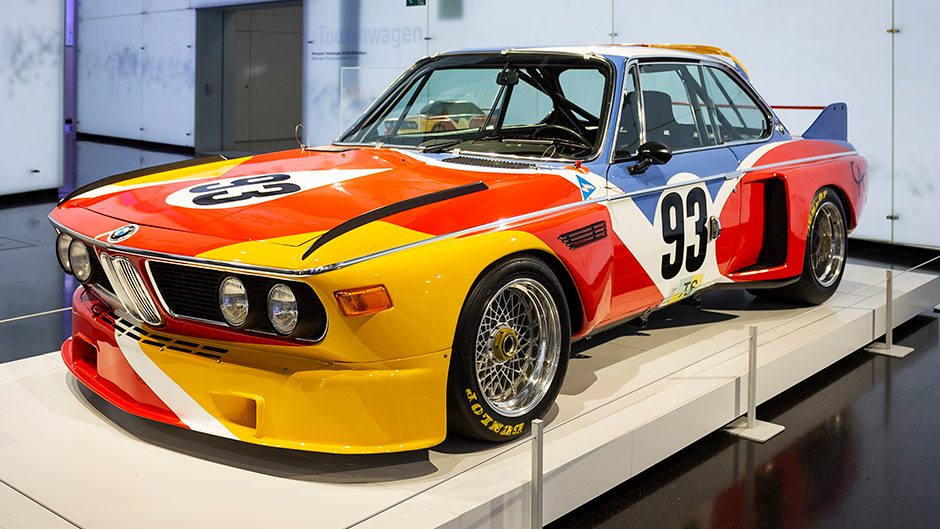
Anyway, this long-winded introduction leads me to art that a car lover might better appreciate. BMW Art Cars are an artist’s impression of speed layered over the world’s fastest canvases, a combination of engineering excellence and visual drama. The Art Car was a concept born in the mid-seventies as an experimental art project and a good way to drum up publicity for BMW’s racers of the time.
The original idea sprang from the mind of French racing driver, Hervé Poulain, who also happened to be an art collector and auctioneer. His crazy idea was greenlighted by BMW Motorsport boss, Jochen Neerpasch, and Poulain used his connections in the art world to convince American artist, Alexander Calder, to complete the first of the Art Cars in 1975. Calder was famous for his sculptures and hanging mobile structures when he turned his gaze on the BMW 3.0 CSL (right). While used to sculpting his own forms, the CSL couldn’t be modified in any way or it would fall foul of the regulations.
Much like his usual work, Calder used bright primary colours to give this CSL a distinctive appearance on the racing grid. Calder was 77 years of age when he completed the CSL, and died a year later. With its 3.2-litre inline six, the 480hp CSL was good for 290km/h and lined up for the start of the 1975 running of Le Mans with Hervé Poulain, Jean Guichet and Sam Posey tasked with driving duties.
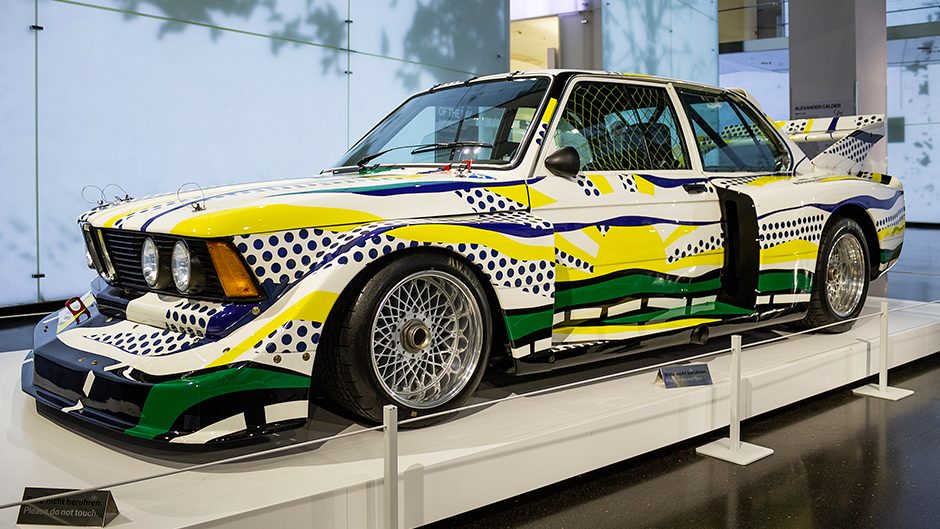
In its only ever race, the car lasted just seven hours before a prop shaft gave up and forced a retirement. The car has since spent the rest of its life as a showpiece the world over as Art Cars are lent out to exhibitions. So with the original four cars on display at the BMW Museum currently, it’s a rare chance to see them all together.
The art on the race track concept was followed up the next year with another American artist, New Yorker, Frank Stella, turning his attention to a 3.0 CSL (above) for the 1976 French endurance classic. Stella was renowned for his “post-abstract” pop art paintings in the sixties but for the CSL he went for a ‘blueprint transferred onto the bodywork’ look. His normal random style took on a ‘technical fascination’ for the racing car with a black and white grid applied to the CSL which is said to help give the car a three-dimensional aesthetic.
The race career of number 21 unfortunately was far from stellar. Its run at Le Mans ended with a DNF due to technical problems while it’s only other outing was at the 500km race at Dijon where a similar fate awaited.
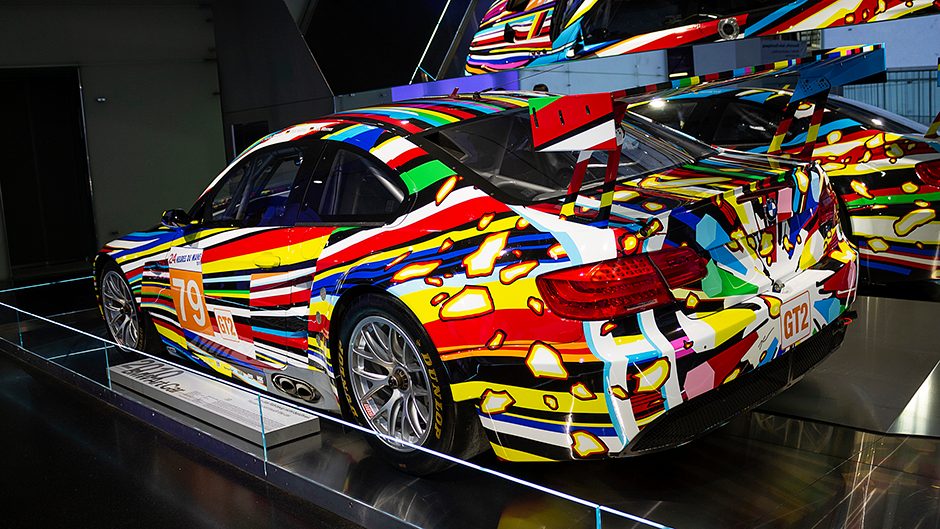
Still, it survived intact to grace art museums for the next forty years of its life.
The canvas for the third Art Car was the 320i Group 5 racer (left), the artist of note being Roy Lichtenstein, one of the founders of American pop art. He is said to have drawn influence for his design from the world of popular mass media and industrial printing techniques.
The racer features flowing forms, lines and matrix dots to depict a a stylised landscape with a blue sky and bright yellow sun. Painted lines symbolise a road showing the car where to go, while the art merges with the form of the 320i to depict ‘unfettered speed and motion’. Onlookers are supposed to see a passing landscape.
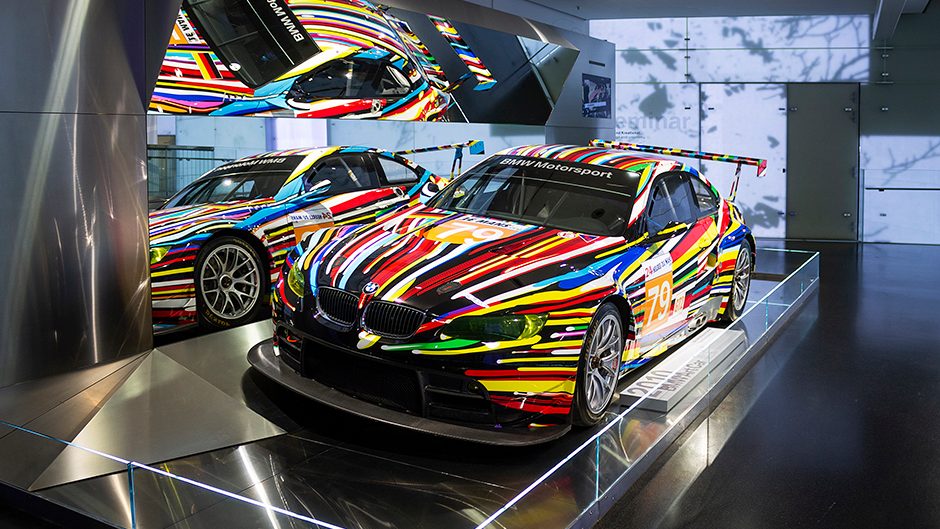
With a 2.0-litre, four-cylinder screamer making 300hp, the Group 5 racer first made its debut not on the race track but at an art exhibition late in 1976 at the Centre Pompidou in Paris before taking part in Le Mans a year later. Again driven by Hervé Poulain and teamed with Marcel Mignot, the French pairing managed first in class and ninth overall.
Each of the four originals has its maquette, or conceptual model, displayed alongside. This 1:5 scale model depicts the artist’s concept before applying it to the actual car. Most of the actual art work on the Art Cars has been carried out by the artists’ assistants, barring the M1.
While not the first, Andy Warhol’s M1 is perhaps the most famous and certainly the most expensive car on display at the BMW Museum. Based on the M1 Group 4 Racing Version, to give it its full official and very Germanic name, Warhol’s elaborate design was not typical of his usual ‘pop style’ of the time.
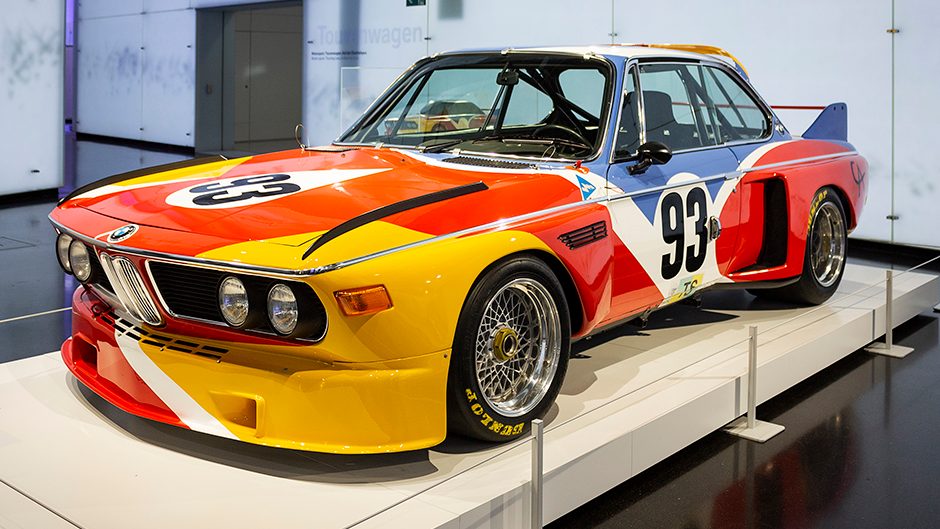
Warhol was the first artist to actually decorate an art car himself, the paint applied ‘wildly and compulsively’. The thick brush strokes are still evident in the application, as are his fingerprints and signature. The lurid paint work is intended to portray a sense of speed and was slapped on by Warhol in less than 30 minutes.
The six-cylinder 3.5-litre engine was good for 470hp and the racing M1 could push 307km/h down the long Mulsanne straight at Le Mans where it competed in 1979. The number 76 car was piloted by German Manfred Winkelhock, and the French pairing of Hervé Poulain and Marcel Mignot. Along the way the M1 was involved in a bit of panel rubbing, losing a bumper in the process, but as luck would have it, Warhol also painted a few spares.
The M1 lasted the distance, finishing second in class and sixth overall. Also on show alongside the original four are the three newest Art Cars. While the majority of the cars through the nineties were based on road going models, the last three have returned to the original concept of racer-based cars, including the 2010 M3 GT2 (below) by American artist, Jeff Koons. This racer lined up at Le Mans in 2010 with its array of colour and ‘fiery arrows’.
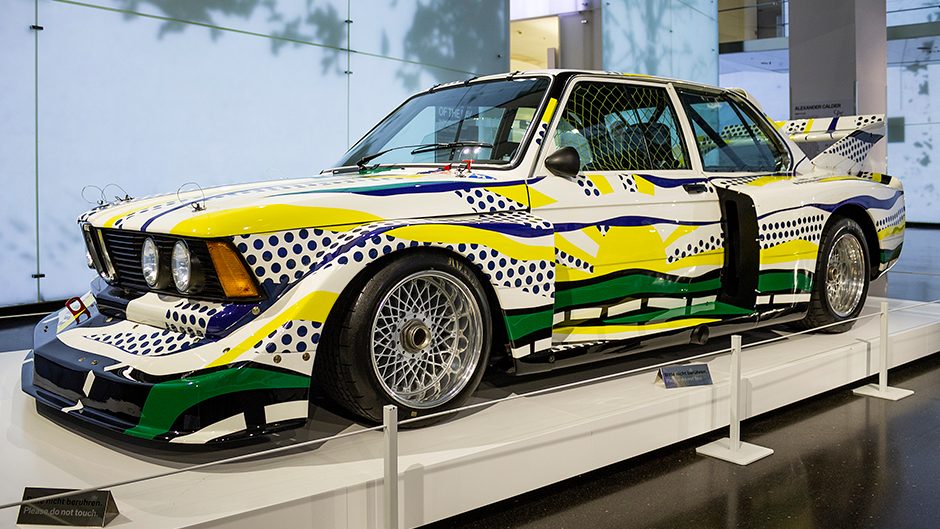
These are intended to represent rays and beams of light to give an emphasis on speed. These were conceived using 3D cad modelling before the car was foiled and painted by hand. It was first displayed at the Centre Pompidou in Paris before going to compete at Le Mans driven by Andy Priaulx, Dirk Müller and Dirk Werner.
Wearing the number 79 in a tribute to Andy Warhol’s M1 of the same year, it retired after five hours. The very latest in the series of 19 cars is based on the M6 GT racer, number 18 designed by Cao Fei, a Chinese video artist while number 19 is the work of John Baldessari.
These are rather uninspiring to behold next to the originals as the all black car of Fei is designed with augmented reality video in mind so just looks like a black car sitting statically, while Baldessari is a minimalist, and the effort indeed looks minimal.
But that’s art for you.


